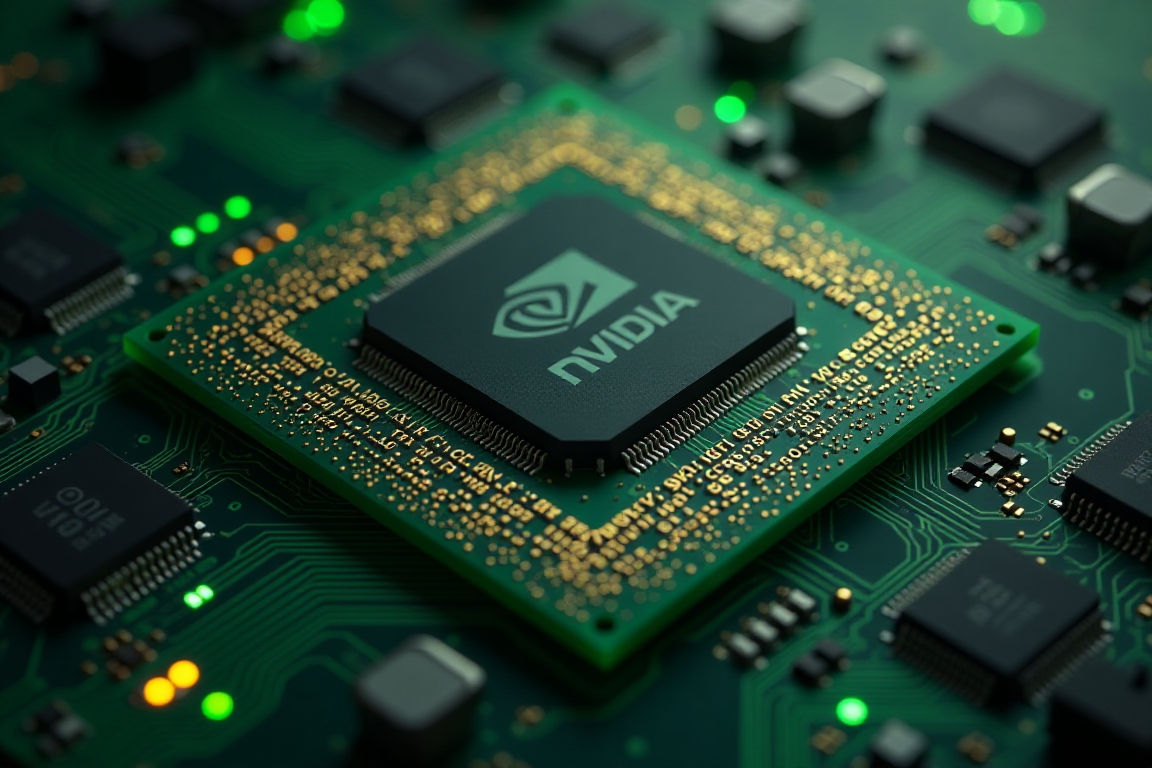Nvidia posted another blockbuster quarter on Wednesday, with revenue up 56% year on year as demand for its highly coveted artificial intelligence chips showed no sign of slowing.
But despite the record results, shares in the $4 trillion Silicon Valley group slipped more than 2% in after-hours trading as investors weighed whether growth around AI is already fully priced into the stock.
Strong earnings beat Wall Street estimates
For the three months to July 28, Nvidia reported revenue of $46.7 billion, marginally ahead of analyst forecasts of $46.5 billion, according to Visible Alpha consensus estimates.
Net income rose 59% to $26.4 billion, comfortably above projections of $23.5 billion, while earnings per share stood at $1.08. The company’s closely watched gross margin came in at 72.7%, narrowly topping expectations of 72.3%.
Chief executive Jensen Huang hailed the results as a sign of “resilient and broad-based demand” for the company’s semiconductors, which underpin everything from generative AI models such as ChatGPT to autonomous driving systems.
Nvidia said it expects current-quarter revenue of around $54bn, plus or minus 2%, broadly in line with forecasts.
Data center sales remain Nvidia’s growth engine
The company’s data center division, which supplies chips to hyperscale cloud providers like Microsoft, Amazon and Google, once again powered results.
Chief financial officer Colette Kress said Nvidia’s latest Blackwell architecture, including the new Blackwell Ultra line, rose 17% sequentially, with cloud players accounting for half of data center sales.
“The ramp of Blackwell underscores how deeply AI adoption is taking hold across industries,” Kress said on a call with analysts.
“We are executing at a pace that continues to set the market standard.”
Data center growth has positioned Nvidia at the centre of the AI revolution, transforming the group from a specialist in graphics processing units for gaming into the world’s most valuable public company by market capitalisation.
China pressure lingers amid trade restrictions
Despite the upbeat figures, geopolitical tensions continued to cast a shadow.
The company confirmed it generated no revenue in China during the quarter due to tightened US export controls on advanced chips. It did, however, sell $650 million worth of its China-specific H20 semiconductors to a customer outside the country.
Executives provided no timetable on when Chinese demand may recover, noting that export licence uncertainty under the Trump administration remains a significant risk.
Analysts said the exclusion of China sales from future projections offers Wall Street a “cleaner baseline” but lowers expectations for a near-term rebound.
Market reaction reflects tempered expectations
While Nvidia shares are up more than 35% in 2025, investors have become more cautious following a string of stellar earnings beats.
The stock fell 1.5% in after-hours trade immediately after the results, extending losses to around 2% later in the evening.
Analysts said the reaction reflects a maturing market view of Nvidia’s growth trajectory rather than disappointment with its performance.
“The market has grown accustomed to Nvidia raising the bar every quarter,” said Dan Ives, analyst at Wedbush Securities. “At this stage, the numbers have to be truly eye-popping to ignite a strong rally.”
Last week, Nvidia’s shares took a breather after a broader sell-off in AI-linked companies, fuelled in part by concerns raised by OpenAI chief executive Sam Altman that investors may be overhyping the near-term potential of the technology.
Outlook points to steady, not explosive, gains
Nvidia’s guidance suggests continued top-line growth but a more measured pace compared to the breakneck expansion of the past 18 months.
Analysts noted that while AI adoption is likely to remain a structural growth story, the market is transitioning from euphoric early-stage investment into a steadier, although still lucrative, trajectory.
“Whatever the short-term jitters, Nvidia remains the clear bellwether of the AI economy,” said Stacy Rasgon at Bernstein Research.
“Its products are synonymous with the infrastructure powering generative AI, and that dominance is unlikely to change soon.”
For now, Wall Street will be watching whether Nvidia can sustain momentum in its newest Blackwell chips, expand supply into new markets, and navigate the risks presented by strained US-China relations — all while maintaining lofty profit margins.
The post Nvidia revenue jumps 56% but shares slip 2% as AI momentum steadies appeared first on Invezz

